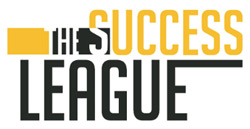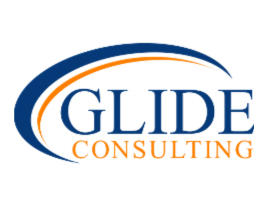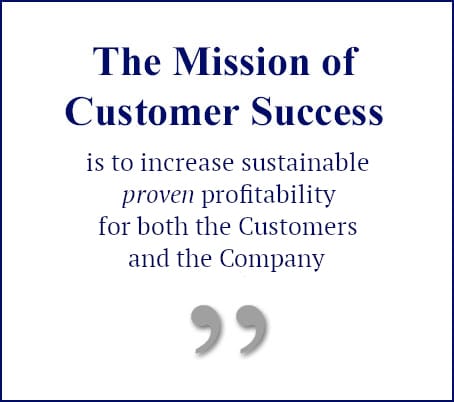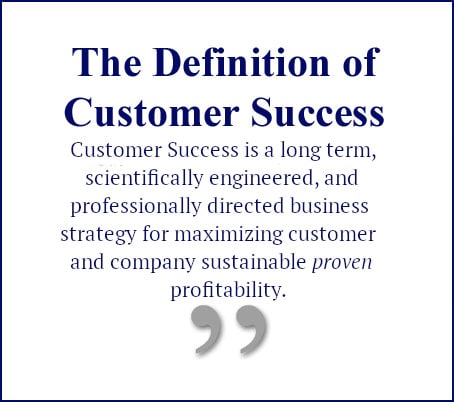Customer Success is a long-term, scientifically designed, and professionally directed business strategy for maximizing customer and company sustainable proven profitability.
The CSM Competency Standard: Overview
The first named Customer Success group was created by a traditional model CRM software company in 1996 to address the issue of customer retention and corporate profitability over time. Since then, Customer Success teams have been established by many different kinds of companies worldwide, but unfortunately with a very wide range in definitions, capabilities, and missions. The lack of clarity regarding the role and its purpose has resulted in a great deal of turnover, confusion, and unrealized value for both companies and their customers.
As a beginning foundation for building a consistent standard for validating open positions and qualifying candidates for Customer Success Managers, The Customer Success Association has published a specification for a first level Competency Standard. The content of the standard was developed over time by significant input and commentary by a wide variety of CSM practitioners, executives, consultants and trainers. Now it’s time to submit the work for review and adoption by the worldwide Customer Success professional community.
The First Level CSM Standard may be used by any company (with attribution) for the purposes of describing an open CSM position, and by individuals to build or develop their professional knowledge and capabilities as a CSM. The standard is copyrighted by and will be maintained by The Customer Success Association. Training companies wishing to create certification programs based on this standard should contact the Association regarding accreditation policies and programs. Individuals interested in being a part of the ongoing Standards Committee for this specification should also contact the Association to apply.
To View the pdf version, click here.
To download the .pdf version, click here.
The text of the Standard is also displayed below:
.
.
The Customer Success Manager Competency Standard, First Level
Definition
The expectations of a first level CSM are those things that the individual Customer Success practitioner should know, use, and be able to comfortably explain to any audience. These include knowledge of terms, concepts, and foundation skills that enable the individual to effectively perform the general duties of the CSM role. (Note that this does not include the domain or subject matter expertise that is also needed, for such expertise varies widely by industry.) The skills and capabilities are in two parts, for the Customer Success Manager has two clients: their assigned Customers on the one hand, and their Company on the other.
The first level of CSM knowledge and skills can be acquired in different ways. On the job training is perhaps the most common way to acquire the basic skills of a customer success manager, with the individual gradually learning by doing, often under the supervision of a more senior level CSM. The first level of CSM competency should be able to be attained within the first year in the role. The associated domain/subject matter expertise, of course, will take much longer.
First level CSM knowledge and skills can also be acquired by successful completion of a training program, augmented by extra-curricular study, in a much shorter period of time. Or the individual may go entirely the self-study route, drawing upon a number of online resources to build their personal knowledge and skill set to meet the first level standard.
The CSM and the Customer
The greatest part of the Customer Success Manager’s job is in working with their assigned customers to ensure that they get the maximum return on their investment in purchasing the company’s products. It’s vital that the CSM realize two key facts about their role with the customers. First, what counts is the customers’ definition of “value,” and this is something that may not be easy for the CSM to reliably determine. Second, it’s important to tie value as directly as possible to money – and to get the customers’ agreement as to the value that they have received.
Typically, the CSM will be introduced to the customer immediately after the initial subscription contract has been signed. Many CSMs, however, have been engaged even earlier during the sales process in a sales engineering role. This is strongly recommended since it gives the CSM direct experience and knowledge of the customer instead of having to rely on Sales to collect and provide this information.
In order to protect and ensure a strong and long-term business relationship, the CSM should establish, maintain, and strengthen working bonds with various people in the customer’s organization. If any of the individuals leave their company or move to different positions, the CSM must immediately identify their replacement coming into the role and begin the relationship building process again with the new person.
Basic Skills of a Customer Success Manager
- Communication with the Customer
- Identifying and establishing rapport with individuals in the various customer roles:
- Company Executives,
- Department managers,
- Administrators,
- Power-users
- Team leads, and
- general users/employees
- Identifying customer expectations, values and desired outcomes at each of the different levels/roles.
- Reaching agreement with the customer as to goals, objectives, timing, and metrics
- Creating a manageable Success Plan with the customer
- Change Management:
- Identifying changes in customer expectations, values and desired outcomes, and
- Effective management of the process of re-setting customer expectations, values and desired outcomes, and their effects on the Success Plan.
- Emotional Intelligence
- The ability to empathize with customers and to translate their concerns/desires calmly and competently to others.
- The ability to recognize and self-regulate one’s own emotions in order to facilitate professional conversations and outcomes.
- Presentation skills:
- Appropriately discussing positive and negative results to a range of audiences
- Preparation and delivery of customer kick-off meetings
- Preparation and delivery of Customer Value Reviews (QBR’s, EBR’s, etc.)
- Social Media Management
- Messaging effectively in short communications
- Identifying and establishing rapport with individuals in the various customer roles:
- Research
- Customer Intelligence:
- Identification, definition, and tracking changes in customer organizations and personnel
- Identifying and understanding customer business trends: upturns/downturns
- Building and maintaining knowledge about the customer’s competition
- Identifying and nurturing customer advocates and success-story sources
- Identification of industry changes and trends from social media channels
- Customer Intelligence:
- Project & Time Management
- Prioritization and management of tasks, goals and objectives
- Balancing of reactive and proactive activities
- Data Management
- Appropriate documentation of interactions with customers in CRM and/or CSTECH systems
- Managing alerts to other company personnel of customer changes and information received
- Analysis of customer data and preparation of recommendations
- Account Growth
- Opportunity management
- Identifying and qualifying opportunities: Up-sells, Cross-sells
- Identifying and overcoming objections
- Managing hand-offs effectively when required
- Closing and follow-through as/when appropriate
- Managing renewals according to company policies and procedures
- Appropriately managing customer departures
- Opportunity management
- Professional Development
- Assessment of personal skills and abilities
- Management of professional development opportunities
Basic CSM Knowledge
- Concepts
- The definition and general process of the Customer Journey, and its relationship to various CSM activities and those of other departments.
- Playbooks and their relationship with the customer journey for consistently repeatable activities and outcomes
- Terminology
- Consumption Gap (Difference between the capabilities of the product and what customers are using.)
- Customer Metrics: ROI
- Customer Success Plan
- Customer Value Review (QBR / EBR, etc.)
- Sales: Prospect, Opportunity, Qualification, Closing. Pipeline. Cross-sell, Up-sell, Renewal. Down-sell. Customer Lifecycle. Executive sponsor, Influencer, Economic Buyer.
- Value: Creation, Gap, Proposition, Realization
The CSM and the Company
Working to ensure the customers’ success is only a part of the CSM’s job. The other part is working for the Company’s success as well. The process of interaction with the customers will reveal information and insights that are of strategic significance to the Company — if properly captured and transmitted to the various personnel, departments and recorded in the technological systems of the company.
The CSM may well find themselves directly involved with Marketing, Sales, Professional Services / Onboarding, Dev, Product Management, Finance, Support, Training, and Senior Management on a variety of issues and initiatives.
Basic CSM Skills
- Communication with the Company / Relationship Management
- Appropriately and accurately representing the interests and desires of the customers throughout to company.
- Appropriately and accurately representing the current and future value of the customer to the company.
- Establishing, maintaining, and increasing credibility with the various departments of the Company: Marketing, Sales, Professional Services / Onboarding, Dev, Product Management, Finance, Support, Training, and Senior Management
- Identifying and managing perceptions and expectations of the Customer Success group and CSMs throughout the company.
- Presentation skills:
- Preparation and delivery of customer insights and information as appropriate to a variety of audiences.
- Research
- Building product knowledge, including familiarity with the product roadmap and schedule.
- Identifying content of value to the customers.
- Data Management
- Identifying relevant information content and prospective interested parties for it throughout the company.
- Serving as the Voice of the Customer to the company
Basic CSM Knowledge
- Concepts
- Customer Segmentation and various approaches to creating effective customer portfolios
- Tiering by economic and/or strategic value of customer relationships
- The concept of Customer Health Scoring and how customer health indicators are generated, evaluated, and managed.
- Key Performance Indicators and their relationship with team and company goals and objectives
- Product vision, major functions and key features
- CSM activity strategies: High touch, Medium touch, Low-touch (Self-Success)
- Components of the Customer Success Technology Suite and how they interact
- The Subscription/Relationship Business Model
- Terminology
- Accounting: ACV, ARR, MRR. Customer Acquisition Cost, Customer Retention Cost, Lifetime Value
- Business Outcomes
- Churn and the various ways it is measured (Logo, Revenue, Users)
- Customer Experience (and its relationship to Customer Success)
- Customer Journey: Major phases. Hand-offs
- Customer Segments / Portfolios
- Customer Success Metrics: NPS, CSAT, Retention, Expansion, Progress of CS Plans
- Customer Success Strategy: High Touch, Medium Touch, Low-Touch (Self-Success)
.
CSM Competency Standard Version
- Version 1.2 Date: 10/7/2020
- Version 1.1 Date: 9/19/2020
- (c) 2020 Mikael Blaisdell & The Customer Success Association








